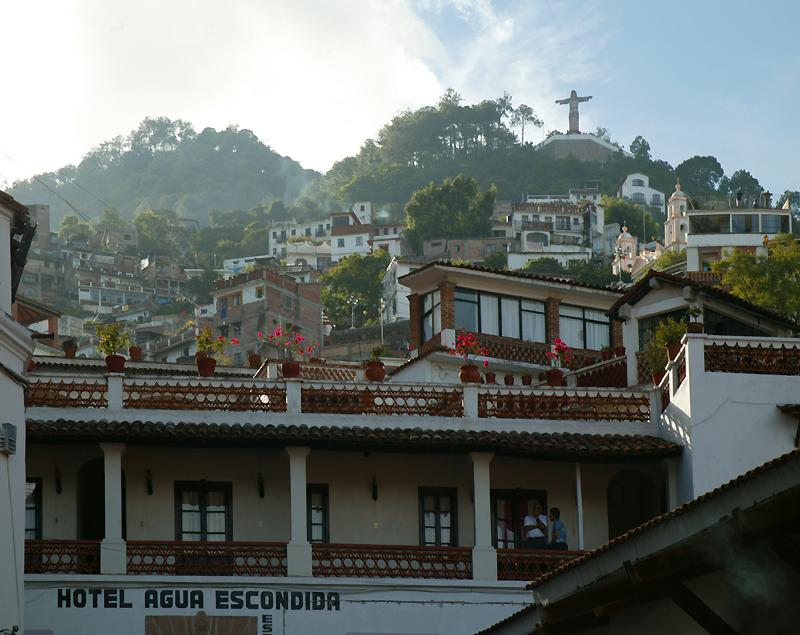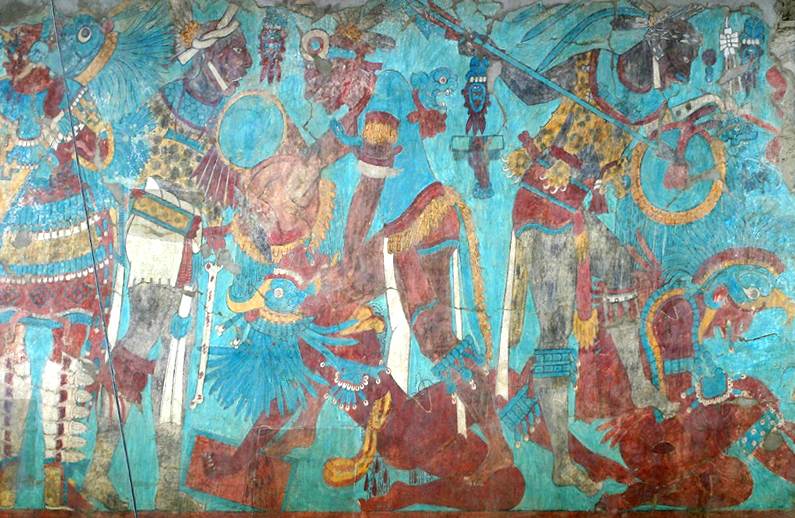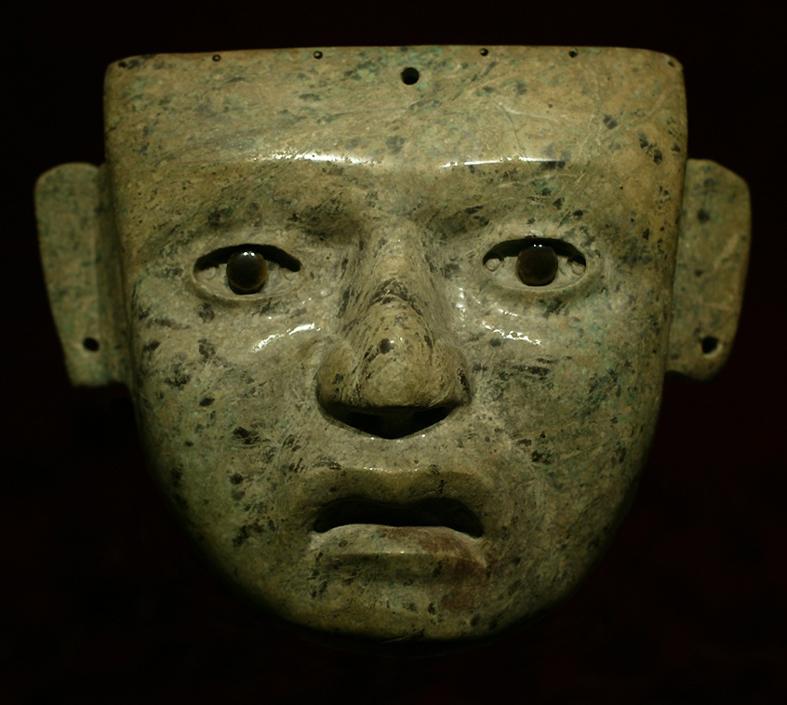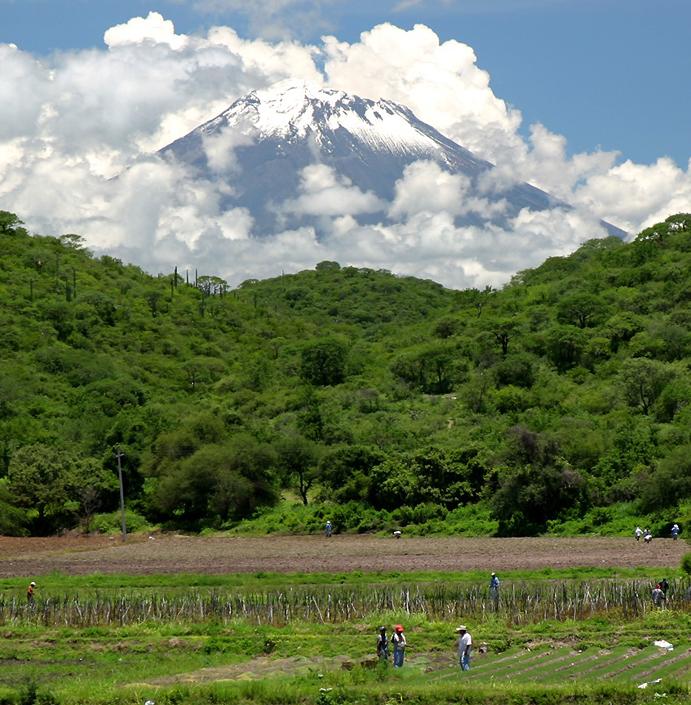Mexico
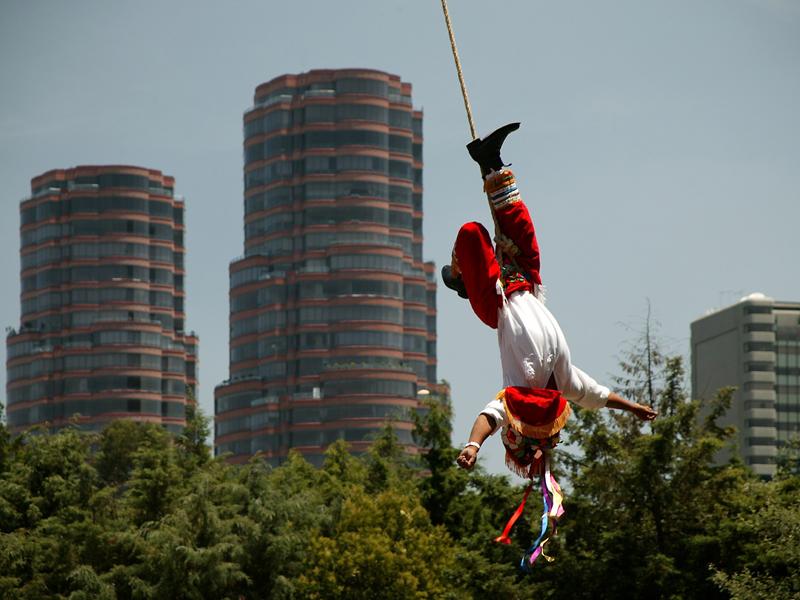
After four years of living in Chicago, I found myself in the southern Californian city of Palm Springs, which is only 75 miles from the Mexican border, as the crow flies. Since I didn't know how long I'd be living there, I decided to make a trip south of the border as soon as I could. People often go to the beaches of Cancun and other parts of the Yucatan Peninsula, but after a lot of reading I settled on Mexico city and the area around it. The whole area is quite elevated and therefore chilly in winter, so I decided that summer would be the most pleasant time to visit. Mexico city is of dubious merit. With 20 million people it has the largest population of any city in the world apart from Tokyo, and it suffers from some of the worst air pollution anywhere because of its position in a valley surrounded by high hills; this is worst in winter, another good reason to visit when I did. An efficient and very useable underground train system does make travel around the city straightforward and allows you to avoid the nightmarish traffic, which I did drive in once. With so many people, even the large city parks are more like carnivals than quiet green oasis, with many of the paths lined with stalls selling food, drink, souvenirs, toys and all manner of other goods. There certainly are pleasures to be had for visitors to the city. A number of excellent museums are here which not only display archaeological remains from the country's many native civilizations, but also feature cultural performances such as this "Voladores" ritual by a Totonac Indian group. In addition, there is a variety of interesting architecture, both modern and from the colonial period. There's even some significant ancient ruins, foremost of which is the Templo Mayor, at the Zocalo right in the center of the city. This was the ritual center of Mexico during the Aztec period, a large temple built on top of previous smaller temples. Partially destroyed by the Spanish conquistadors in the 1520s, it was buried and built on before being excavated in the 1970s. The site and its adjacent museum are well worth visiting. |
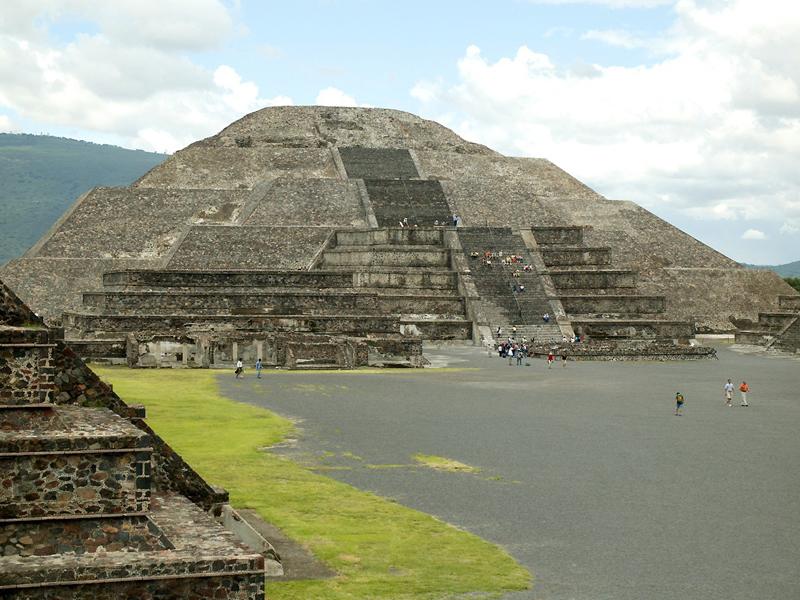
If there had been only modern and colonial architecture on offer, then I almost certainly wouldn't have bothered coming to this part of Mexico. The main attraction for me was the ancient archaeological remains of the many native peoples who had lived in this area. Chief among these is the city of Teotihuacan, the largest archaeological site in the country, and just a short drive north of Mexico city. Teotihuacan is best known for the two huge pyramids which dominate the Calzada del los Muertos (Avenue of the Dead), the Pyramid of the Sun and the Pyramid of the Moon, which you can see here. This is a very large site, and it would be possible to spend several days here, visiting the many large structures in the central area, as well as seeing the few colorful murals which have survived the wet climate here. Some of these murals are in the smaller structures like the wonderfully named Palace of the Quetzal Butterfly or the Temple of the Plumed Conch Shells, and some are in priestly residences a short walk from the main area, such as the playful mural called The Paradise of Tlaloc, which is in the Tepantitla Palace. |
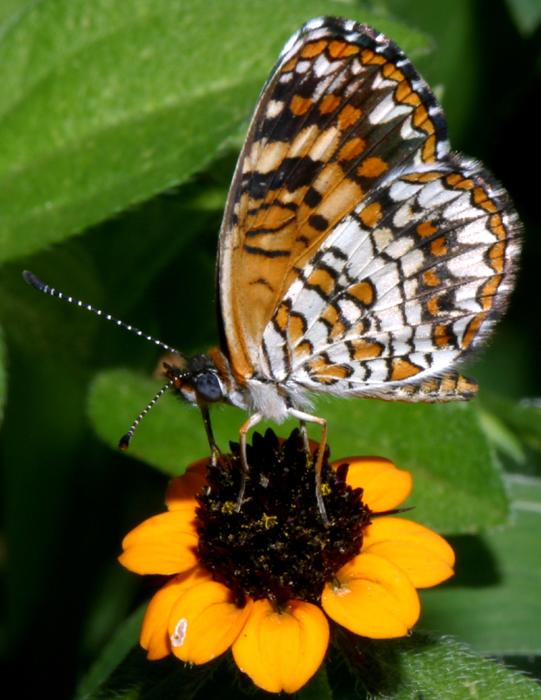
In spite of the damage done to the environment in Mexico, I was determined to see as much of what remained as possible, within the limited timespan I'd allowed myself. Large wildlife has been pretty much eliminated, and even the birds have been largely crowded out by the destruction of their habitat, but many insects and other small arthropods still manage to make a living along the sides of roads. Even in the center of Mexico city I was able to photograph butterflies visiting planters full of flowers, as well as other insects ekeing out an existence in the sterile looking plantings along the Paseo de la Reforma. Many of the ruins were ideal for lizards, which sunbathed on the stones. I was also lucky enough to see a small snake when I pulled into an otherwise uninteresting rest stop by the side of the road. It was at least as scared as me as I was of it, but I did manage to get a few photos before it bluffed its way past me. |
